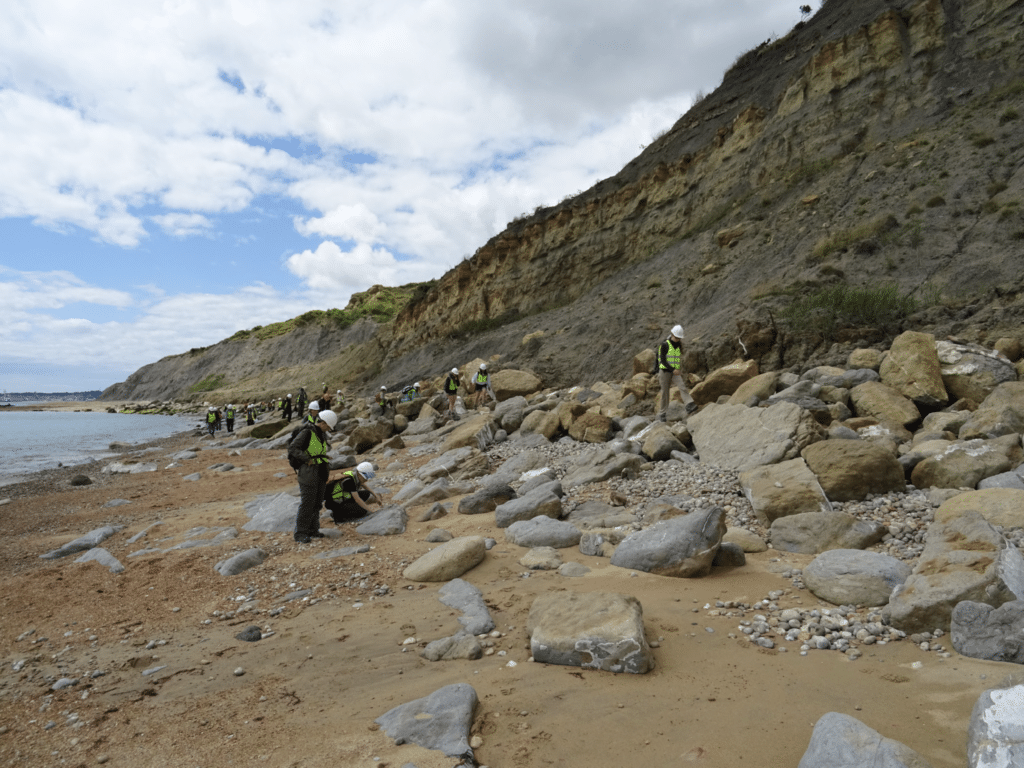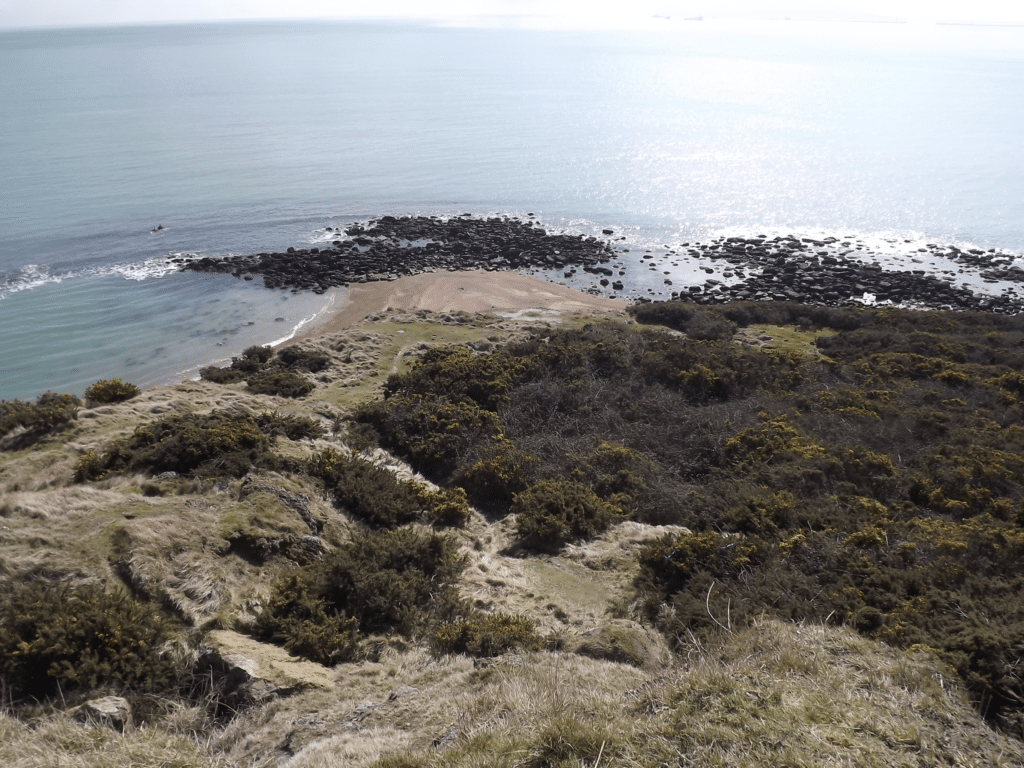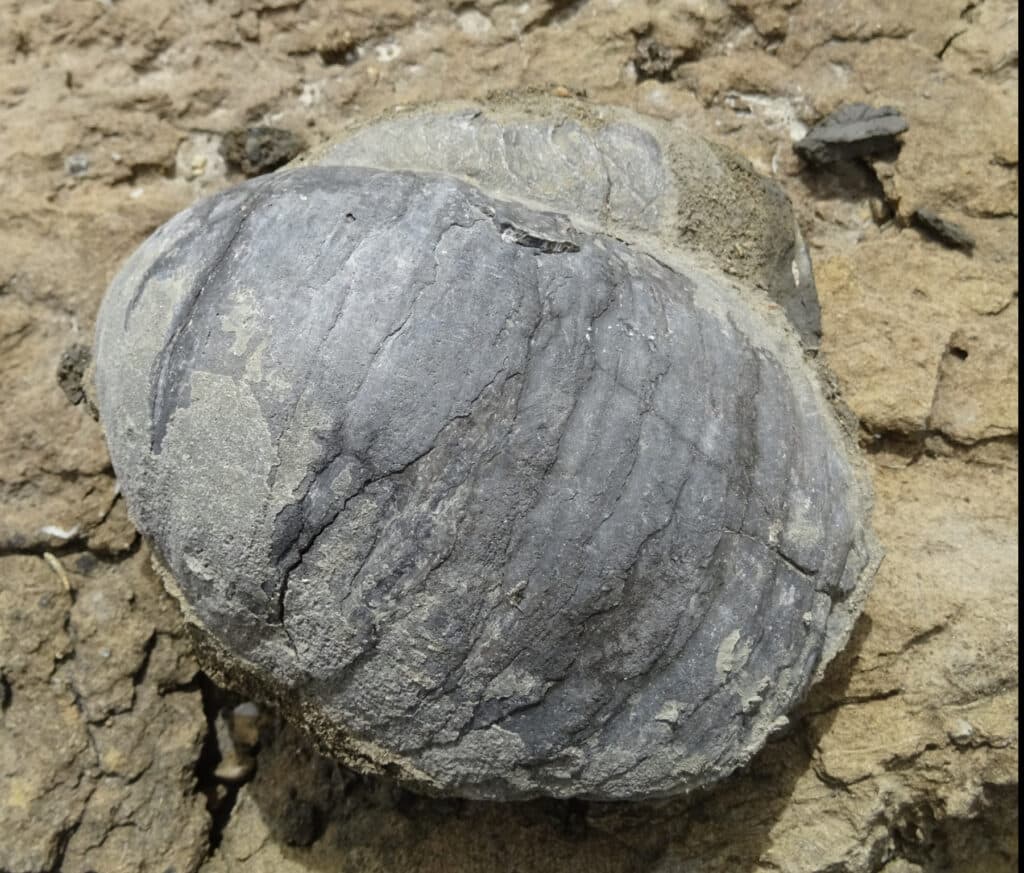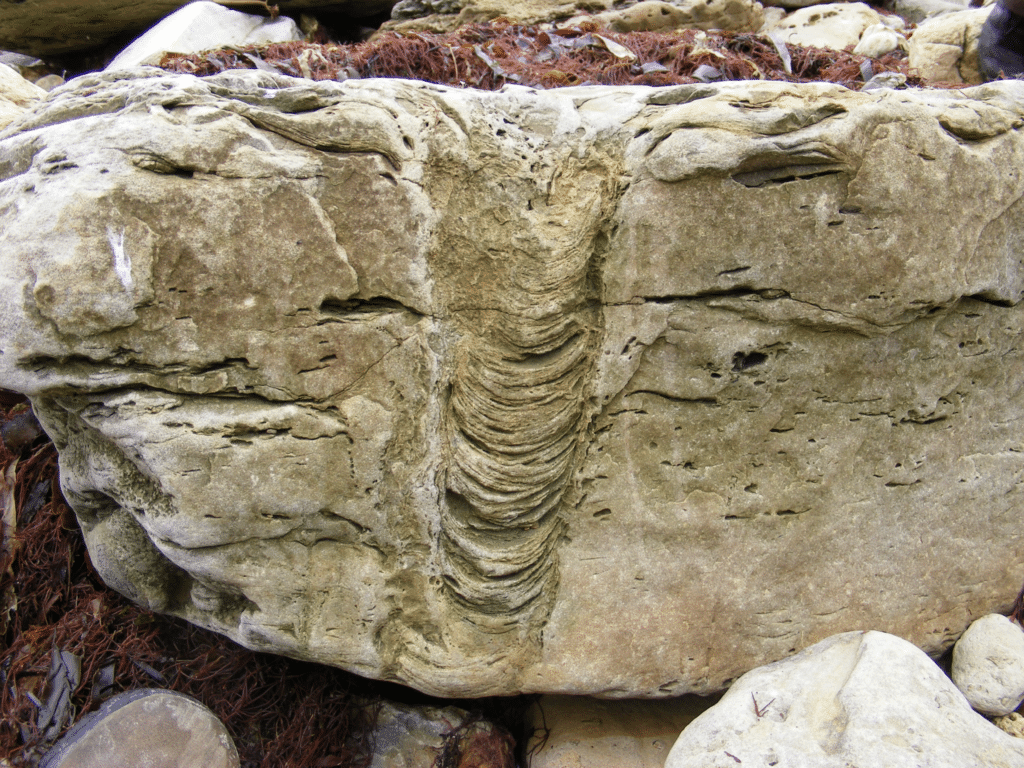Access to this section is via the footpath from Osmington village past the PGL outdoor activity centre and the steps to the beach. Jurassic Corallian rocks can be seen immediately reaching the beach and these dip to the east as they are part of an anticlinal fold (dome shape) which has been exposed due to the erosion of the cliff (Ham Cliff). Again rocks seen include oolitic limestone and fossil rich shelly limestone (especially Myophorella). Working west the rock changes to a clay and this is the Oxford Clay in the centre of the fold. Fossils can be found but they are not so easy to find (ammonites and oysters). On reaching Redcliff Point there is a lot of evidence of slumping with large blocks of limestone and sandstone mixed with clay. Such a combination of harder sandstone and limestone and weaker clay is ideal for landslips to occur.

At Redcliff Point there is a change in the geology and Oxford Clay is again seen but this time it has been up-fault from depth by earth movements in the geological past. It is odd having a headland made of clay but again you will notice many large blocks of Corallian rocks forming an arc and these help to act as natural rock armour! These also have come from inland due to landslips. The picture below was taken from above Redcliff Point

The Oxford Clay at Redcliff Point can be very fossiliferous especially on the western side and the picture below is of a large oyster called Gryphaea that was found there recently. It is around 15cm across.

Continuing on to Bowleaze Cove, it is quite a difficult walk across large boulders but quite possible with care. The boulders are full of geological interest but show features seen elsewhere along the coast for example at Osmington Mills.

This section again exposes Corallian rocks with sandstone and limestone. The lower visible cliff is sandstone and then there is a layer of clay with a second cliff above (out of sight) which is limestone. Landslips have produced the jumble of rocks you see on the beach. These show examples of ripple marks, cross-bedding and many excellent trace fossils (trails and burrows of creatures that lived at the time the sediment was deposited on the sea floor around 155 million years ago). The picture below is a section of a U shaped burrow produced by a large worm like creature probably similar to a modern lugworm. It is about 12cm across. Trace fossils are common as burrows because creatures burrowed into the soft sediment below the sea floor and the traces were preserved as the sediment was converted to rock. Many of the rocks seen show patches of rust and these are because the rocks contain the mineral pyrite often called fool’s gold. This is iron sulphide and in the atmosphere it oxidises and goes rusty. The pyrite is found in association with fossilised wood. The wood floated into the Jurassic sea and eventually sunk to the sea floor. Bacterial action resulted in the formation of oxygen poor conditions (anaerobic) and pyrite formed.


Although you might expect to find ammonites in the rocks they are not that common in the Corallian rocks seen between Bran Point and Bowleaze Cove. The rocks were mostly formed in quite shallow water and the ammonites may not have been as readily fossilised as other marine creatures such as oysters (bivalves) that lived on the sea floor. The fossils are quite difficult to extract from the sandstone and limestone rocks as the fossils are about as hard as the rock. In the picture below you can see a section through a snail, fossil and rock are of similar hardness as erosion occurs. The fossil is around 10 cm in length.

Looking west from Bowleaze you can see Furzy Cliff which is Oxford Clay (grey) with a capping of orange Corallian sandstone as seen in the picture below taken from above the Riviera Hotel. Fossils can be found in the clay and mainly the oyster Gryphaea.

Join us in helping to bring reality and decency back by SUBSCRIBING to our Youtube channel: https://www.youtube.com/channel/UCQ1Ll1ylCg8U19AhNl-NoTg SUPPORTING US where you can: Award Winning Independent Citizen Media Needs Your Help. PLEASE SUPPORT US FOR JUST £2 A MONTH https://dorseteye.com/donate/












